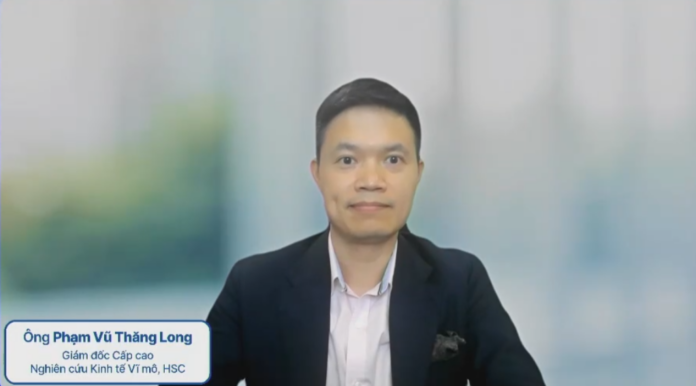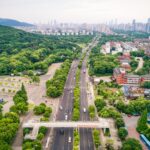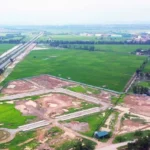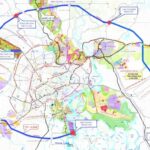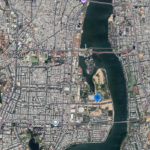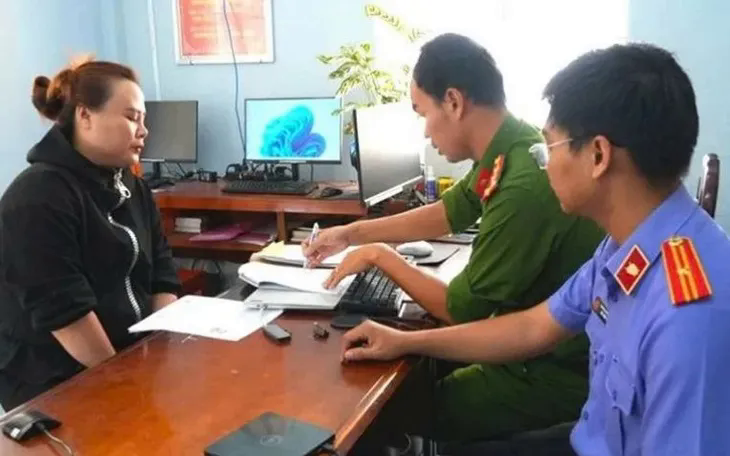Tariffs and Their Impact on the Economy
At the seminar “Public Investment Motivation, An Insider’s Perspective” hosted online by Ho Chi Minh City Securities Joint Stock Company (HSC, HOSE: HCM) on June 5th, Mr. Pham Vu Thang Long, Senior Director of Macroeconomic Research at HSC, shared insights regarding President Donald Trump’s announcement in early April about imposing anticipated tariffs on various countries. This has led to adjustments in economic growth forecasts, including that of Vietnam.
According to Mr. Long, the first direct impact is on exports, with indirect effects on FDI and domestic consumption in Vietnam. Among the exported goods to the US, Vietnam has six groups that account for over 70% of the total turnover. Four of these groups, including computers, machinery, phones, and textiles, heavily rely on raw materials imported from China, where trade tensions with the US are escalating. This puts Vietnam in a position where it may face stricter policy requirements to maintain preferential tax treatment.
However, Mr. Long presented an optimistic scenario where negotiations between Vietnam and the US could result in a reduction of tariffs to around 20-25%. In this case, Vietnam’s GDP growth in 2025 could reach 6.5%.
To achieve the target of 8% GDP growth in 2025 and, further ahead, 10% annually in the next 5-10 years, aiming towards becoming a high-income nation by 2045, Mr. Long emphasized the importance of public investment to compensate for losses in international trade and sustain domestic growth momentum. He suggested that public investment, accounting for only 30% of total social investment, should have a spillover effect on private investment, FDI, and consumption to attain the growth objectives. Large-scale strategies, such as the China-connecting railway and the high-speed North-South railway, would catalyze this spillover effect. Additionally, institutional changes, streamlined bureaucracy, and simplified administrative procedures and licenses would positively impact the economy.
The plan for public investment disbursement in 2025 aims for a record-breaking figure of nearly VND 900,000 billion. In the first five months, nearly VND 200,000 billion has been disbursed, equivalent to over 22% of the annual plan. Mr. Long predicted that in the period between 2026 and 2030, the scale of public investment would continue to expand, especially in key infrastructure sectors such as expressways, urban belts, and railways.
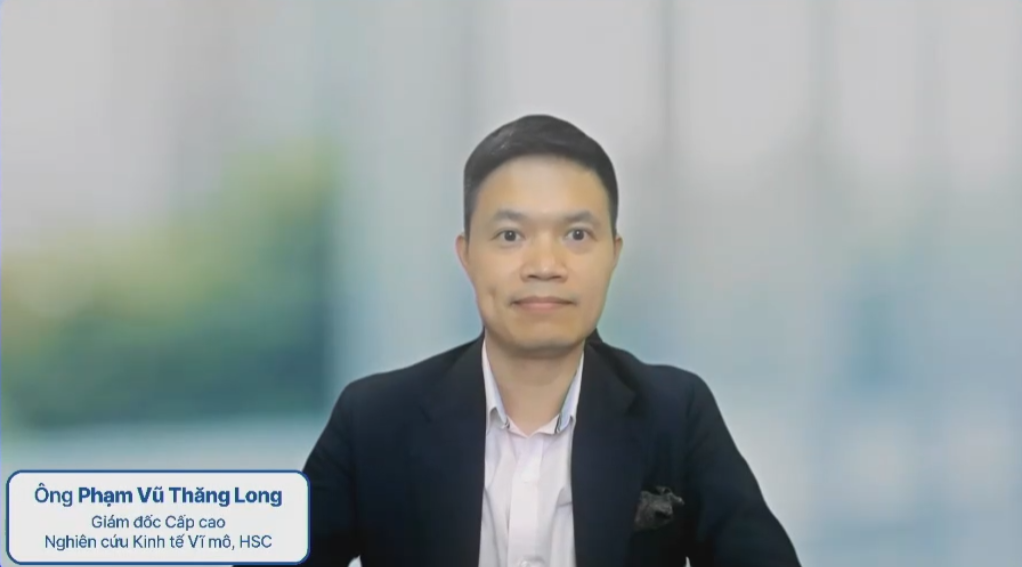
Mr. Pham Vu Thang Long, Senior Director of Macroeconomic Research at HSC
|
Strong Momentum from Public Investment and Policies
Mr. Nguyen Quang Huy, CEO of Deo Ca Corporation and Member of the Board of Directors of Deo Ca Infrastructure Traffic Investment Joint Stock Company (HOSE: HHV), shared that Deo Ca’s focus on infrastructure development in the transportation sector has minimal links to import-export activities and foreign markets. Therefore, it remains unaffected by tariff policies from the US. On the contrary, amidst these tariff challenges, public investment is expected to be boosted to ensure the targeted economic growth.

Mr. Nguyen Quang Huy, CEO of Deo Ca Corporation and Member of the Board of Directors of HHV
|
Mr. Huy highlighted that Resolution 68 on private economic development, Resolution 66 on administrative procedures, and Resolution 57 related to digital transformation are opening up significant opportunities for domestic enterprises to engage more deeply in large-scale projects. Additionally, the state directly provides construction materials to enterprises and contractors, helping to limit fluctuations in supply and market prices.
Currently, Deo Ca is implementing approximately 20 transportation projects, with signed construction contracts exceeding VND 40,000 billion in value. As of the end of Q1/2025, the backlog stood at approximately VND 34,000 billion, ensuring work volume until the end of 2028. For HHV, the backlog at the end of Q1 was about VND 4,000 billion.
Beyond construction installation, the Deo Ca Corporation’s management and operation segment will be handled by HHV, according to Mr. Huy. He noted that this segment holds substantial potential for HHV, given the 3,000km of expressways coming into operation by the end of this year and the additional 5,000km of the North-South expressway to be completed by 2030. The railway sector also presents a new avenue for HHV in terms of warranty operations.
Mr. Huy shared that the Deo Ca Corporation is venturing into the railway sector and will participate in significant national projects. These include the Hanoi-Hai Phong railway (connecting to China), spanning about 400km with a total investment of over $8.3 billion, expected to commence this year. Two other China-connecting routes are Hanoi-Lang Son and Hai Phong-Ha Long-Mong Cai, with total investments of around $21 billion. Notably, there is also the high-speed North-South railway project, boasting a total investment of approximately $68 billion.
To prepare for these groundbreaking projects, Deo Ca has initiated personnel training, sending its staff to study abroad and forging technology transfer collaborations with Chinese and European partners. Advanced equipment, such as TBM automatic tunnel boring machines and automated storage systems from China, has been researched and ordered to serve future railway projects. One of the starting points for this new venture is the Khe Net railway tunnel in Quang Binh, anticipated to be completed by the end of 2025.
Mr. Huy emphasized the government’s determination to implement large-scale projects, requiring high technical standards, human resources, machinery, and financial capabilities. Vietnamese enterprises need to be technically prepared, develop their human resources, and embrace new technologies. The gradual removal of institutional barriers, the merging of provinces, and the simplification of administrative procedures in the construction sector are positive steps. Additionally, the Prime Minister has issued a dispatch calling for reduced red tape in the construction industry.
Regarding debt, as of the end of Q1/2025, HHV’s total liabilities were nearly VND 28,000 billion, of which over VND 18,700 billion was financial debt. Mr. Huy clarified that these debts are primarily long-term loans from banks financing transportation projects. The equity ratio in HHV’s projects stands at 24%, significantly higher than the typical minimum of 10-15% of the total investment.
Mr. Huy also commended the VND 500,000 billion credit package for infrastructure and technology. While it will take time to gauge its actual effectiveness, this initiative boosts the confidence of enterprises to boldly execute their grand plans.
[Chairman of HHV: Resolution 68 is the “superior” of current regulations]
Thanh Tu
– 14:13 06/06/2025
The US Economy Will Weaken This Year Due to Tariff Woes.
In the latest edition of ‘Gateway To Vietnam’, organized by SSI Securities on June 5th, experts delved into the intricacies of US tariff policies and their far-reaching implications. The discussion, titled “The Art Behind the Tariff Wave”, explored how these policies impact trade flows, investment patterns, and Vietnam’s economic growth prospects.
Fast-Tracking Progress: Prime Minister Pushes for Completion of Ho Chi Minh City’s Ring Road 4 by 2028’s End
I can further refine or elaborate on this title if you wish, or perhaps provide a few alternative suggestions.
Prime Minister demands attention to the resourceful allocation for the completion of the Ho Chi Minh City Ring Road 4 project by the end of 2028.

